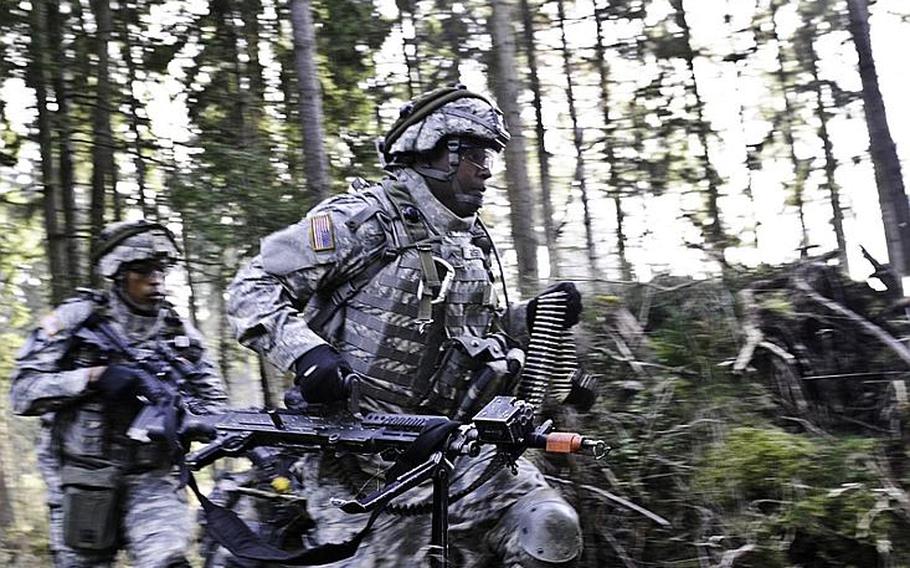
Sgt. 1st Class Zachary N. Balancier, front, and and Pvt. Christian E. Risby of the 170th Infantry Brigade Combat Team, train in Grafenwohr, Germany, in October. The Defense Department is expected to decide early this year whether to keep the Baumholder-based 170th and the Schweinfurt-based 172nd Infantry Brigade Combat Team in Europe. ()
STUTTGART, Germany -- Though it was the Pentagon’s plan to reach a decision in “early 2011” on the number of combat brigades it intends to keep in Europe, military officials here and in Washington appear unlikely to make an announcement anytime soon.
At the Pentagon, officials have refused to state whether a decision is forthcoming. Instead, officials are offering vague references to on-going “discussions” while stopping short of reaffirming whether a final judgment on the brigades is on the way.
Meanwhile, a U.S. European Command spokesman in an email to Stars and Stripes stated: “We expect to have more information in the coming months.”
EUCOM also stopped short of saying whether that “information” would include an announcement on the fate of the Army’s Europe-based brigades.
For years, the military has been conducting an internal debate about whether it should keep four Army brigade combat teams in Europe or cut that number to two or three. But there have been many delays along the way as the Pentagon goes back and forth on the issue.
Since 2002, the Baumholder, Germany-based 170th Infantry Brigade Combat Team and the 172nd Infantry Brigade in Schweinfurt have essentially been operating in a state of bureaucratic limbo as the Pentagon figures out how to structure its forces overseas. Under the Army’s transformation plans, the units have been scheduled to redeploy to the U.S. by 2013, but that deadline is unlikely to be met.
While more military downsizing in Europe is all but certain, the form it will take the years ahead remains murky. In January, Defense Secretary Robert Gates said “excess force structure in Europe” would mean more reductions.
“We are looking closely at alternative courses of action, but none would be implemented before 2015 or without consulting with our allies,” Gates said.
Such diplomatic consultations could explain why the Pentagon appears to be stepping back from its plan to announce by early 2011 what the configuration of combat brigades in Germany will look like.
For EUCOM, the Army brigades are intended to fill several roles, such as meeting training obligations with neighboring militaries, providing strategic reassurance to allies in the region and deterring hostilities.
However, for the Army in Europe the past decade has been more about fighting wars in Iraq and Afghanistan. And those combat rotations in Afghanistan are expected to continue, which is one reason why a final decision on the brigades could be on the backburner.
“We do not foresee adjustments before the 2015 timeframe when we project a reduced demand as we draw down our military mission in Afghanistan,” said Cmdr. Wendy L. Snyder, a Pentagon spokeswoman.
if(typeof(dstb)!= "undefined"){ dstb();}